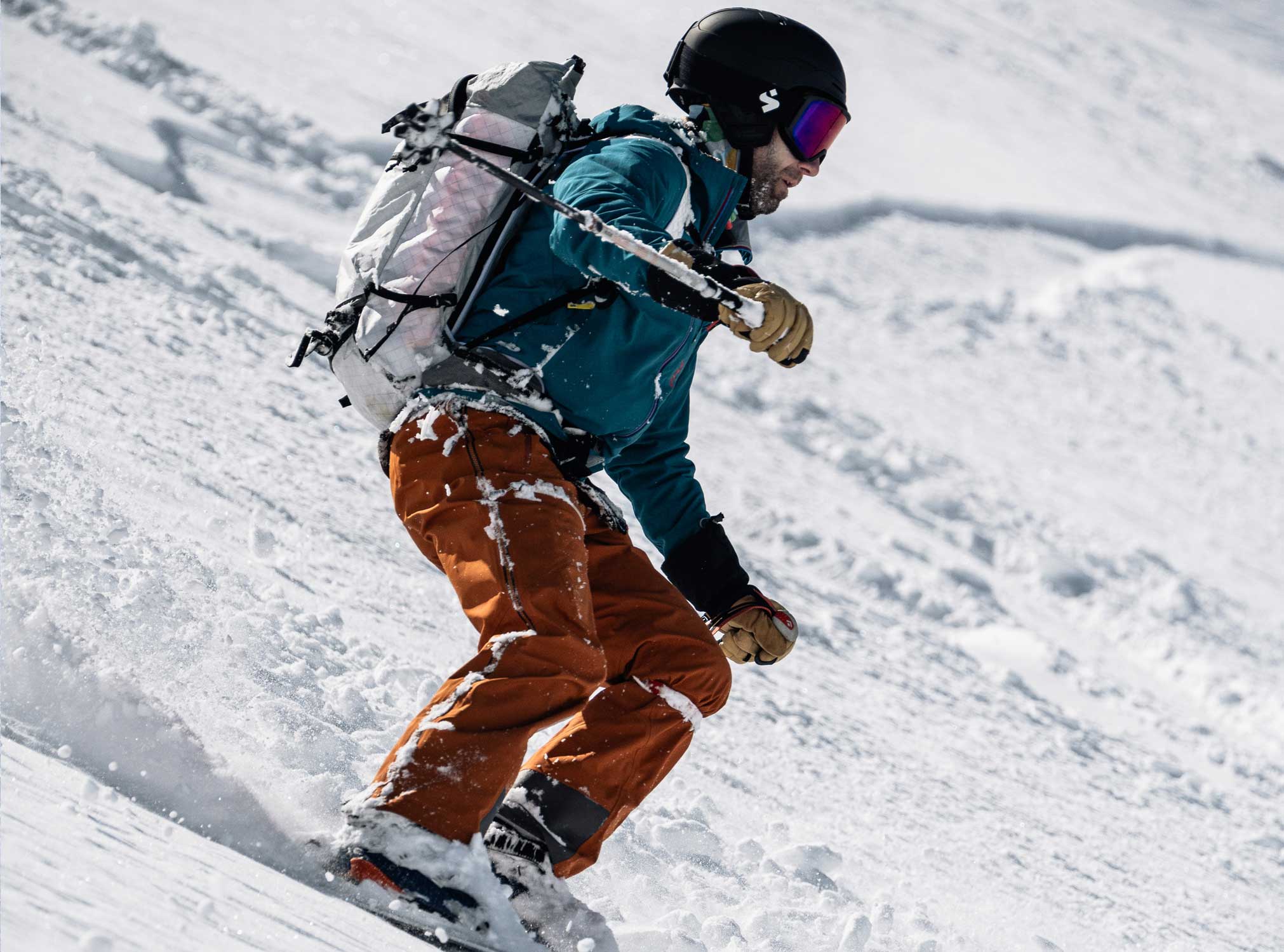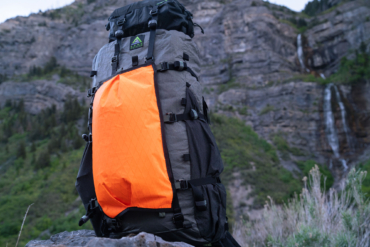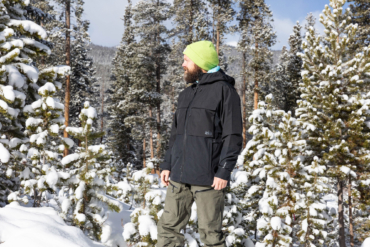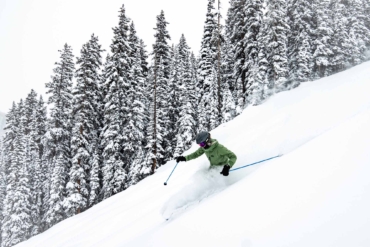With sweeping changes to resort skiing this year, more people will opt for backcountry options, many for the first time. And odds are, most won’t use an avalanche airbag — because they don’t know the truth about avalanches, airbags, or both.
Deep in the Wallowa Range of eastern Oregon, we hollered loud enough for Ullr, the Norse god of snow, to hear us. With 50 inches of new snow in just 3 days, we’d won the powder lottery.
After 1,000 feet of waist-high powder, we stopped on an island of safety — a grove of trees elevated above the rest of the slope — and surveyed the last pitch. Despite a few signs of instability, we agreed to continue.
But on the first to go, I glanced over my shoulder. The entire face above us was breaking, remotely triggered by another party with a crown nearly 500 feet wide and 3 feet high. If I had dropped in a few seconds earlier, the avalanche surely would have swept me to the valley floor.
That moment, the closest call in my 5-year tenure as a backcountry skier, uncorked a curiosity for avalanche safety. Since then, I’ve obsessed over new gear and better techniques as well as learned from experienced experts.
Through this search, one thing stood out like a sore thumb. While a majority of backcountry users carry a shovel, beacon, and probe, fewer than 20% use avalanche packs despite clear research that shows they could help you survive.
Part of the reason for this is that some myths about avi packs and avalanche safety persist — despite all that research. Below, we debunk five of the most common myths about avi packs.
You may find it curious that so few people use airbag packs. Let’s debunk the major myths about them.

Avi Airbag Packs: The Data
To learn more, I spoke with Pascal Haegeli, Ph.D., avid backcountry skier, professor, and the Research Chair in Avalanche Risk Management for the Canadian government. Haegeli leads a team of 10 researchers and works with both public and private entities in North America.
His airbag pack research was a side project with the Canadian Avalanche Association that spans nearly 20 years of data across seven countries. It’s arguably the most rigorous research of avalanche safety in the world.
“Research runs the gamut of theoretical modeling, experimental testing (with dummies), and, more recently, using aggregate accident data,” he told me.
“I was initially focused on just Canada, so I ended up working with teams from the U.S., France, and Switzerland to have a quite substantial dataset that allows for very strong conclusions. Bottom line, airbag packs reduced mortality rates [for those caught in avalanches] by a little over half.”
Haegeli noted that because asphyxia is the primary cause of death among avalanche victims, airbags help by keeping you closer to the surface of the slide.
The data from Haegeli’s studies are clear. Here are the key takeaways:
- Without an airbag, the chance of being buried under the snow is 47%
- With an airbag, the chance of being buried drops to 20%
- Without an airbag, the mortality rate if caught in a slide is 22%
- With an airbag, it drops to 11%
“It’s not a perfect system and doesn’t always save you, but neither does a beacon,” Haegeli concluded. “That’s what we need everyone to understand.”
5 Myths About Airbag Packs: Debunked
Myth 1: Airbag Packs Encourage Skiers to Take More Risks
Haegeli acknowledged that some skeptics have expressed concern that skiing with an airbag pack exposes people to more risk. To learn more, he ran a 400-person survey, and sure enough, some responded that they would push farther into the backcountry with an airbag pack.
Yet, he noted these numbers are likely skewed. Airbag pack users are more experienced skiers and ski more frequently and more aggressively. Controlling for these variables, the risk-inducing logic holds little water.
Haegeli asserts this isn’t the problem we should be discussing.
“Instead, we should focus on risk compensation,” he said. “Manufacturers should mention this in manuals. We should expand avi courses to include this discourse. Education, not leaving your airbag pack at home, is the solution.”
Myth 2: Airbag Packs Are Hard to Deploy
Haegeli’s goal with his project was to set the record straight on many topics, including user error. One early result was that non-deployment remains the biggest limitation to effectiveness. He emphasized that a substantial number of people didn’t deploy their airbags when caught in an avalanche.
“Obviously, this is a major hurdle of the tool. I’m a strong proponent of the new electric systems because they allow users to practice more. With practice, you’ll be ready when the time comes.”
Many people, Haegeli said, buy an airbag pack and assume they will know how to use it when the time comes. He encourages backcountry users to think of it just like a beacon, which requires ample practice to master.
“Airbag packs are no harder than any other safety tool we have,” he said.

Myth 3: Airbag Packs Are Expensive and Heavy
Haegeli admits that for years, these hurdles were real — and the primary reasons skiers didn’t buy many airbag packs. At triple or quadruple the price and often adding 5 pounds to your back, early airbag packs just weren’t affordable or practical on long tours. However, newer packs from major manufacturers are both lighter and cheaper.
The BCA Float 2.0, Black Diamond Jetforce Pro, and Mammut Ride 3.0 all add between 2 and 3 pounds to the stock pack weight. The Ortovox Ascent adds just 1.5 pounds. Meanwhile, the Osprey Soelden Pro and Arc’teryx Voltair add around 3 pounds depending on the size.
Overall weights have dropped almost in half and, similarly, prices have come down too. Although some systems still cost $1,000 or more, Mammut, BCA, and Ortovox all have options at or below $400.
Myth 4: You Can’t Fly With Them
Another longstanding hurdle was that you couldn’t take your pack on an airplane for ski trips across the country or around the globe. However, with removable CO2 canisters and new battery-powered systems, this limitation has almost fully disappeared.
Nearly every major airbag pack maker has at least one option that you can fly with, and many are now making all of their packs with removable canisters.
Myth 5: Gear Can Replace Knowledge
Haegeli’s key takeaway is that risk management is and will always be a personal choice. Therefore, even the perfect airbag pack won’t save every skier caught in a slide. Instead of telling backcountry users what to do, Haegeli sees himself as a researcher trying to provide evidence so that you make more informed decisions while in avalanche terrain.
He believes airbag packs aren’t a silver bullet, and we should never think about buying new gear as an alternative to learning the skills for, and acquiring knowledge about, safe ski touring in the backcountry.
“This isn’t an either-or scenario. Upgrading your gear should not be considered an alternative to learning about avalanche safety. Instead, they need to go hand in hand,” Haegeli advised.







